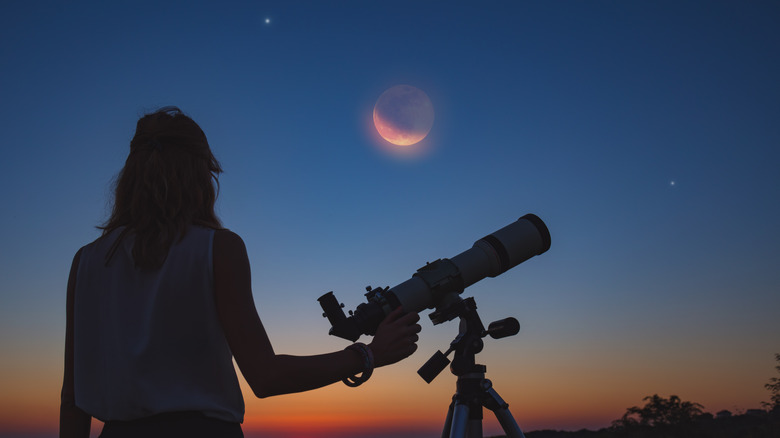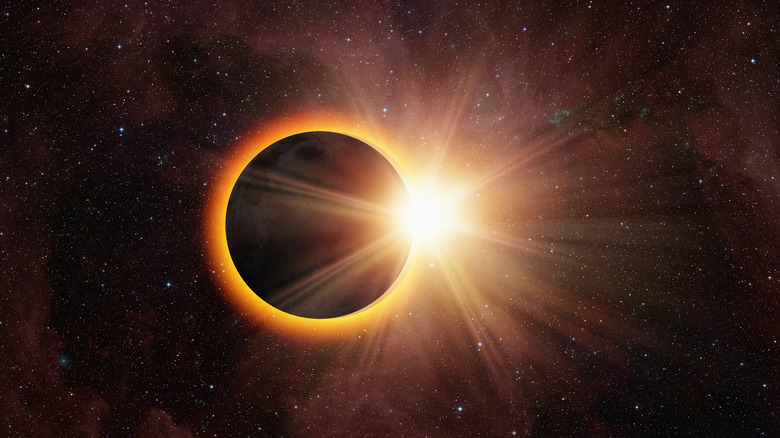Why Is It That Sometimes The Sun And Moon Look The Same Size?
Of all the interconnected relationships between the celestial bodies in our solar system, there's no question that what happens between our Earth and its moon is nothing short of astonishing. For example, the moon's gravitational pull is the driving force behind our oceans' tides (via National Geographic).
In addition, a few times a year, the moon passes in front of the sun at the right angle so as to produce a stunning total solar eclipse. Such eclipses, which are different from lunar eclipses, can only occur twice a month as the moon must be within 0.5 degrees of the imaginary line of Earth's orbit around the sun — called the ecliptic, per NASA.
Now, we all learned in elementary school that the moon is much, much smaller than the sun, and the sun is much, much further away from Earth than the moon. However, during a total solar eclipse, the sun fits behind the moon like a glove. So why is it that these two celestial bodies look the same size from here on Earth?
A matter of good timing
According to New Scientist, the reason the moon and the sun appear so similar in size is all due to a "striking coincidence." The diameter of the sun is roughly 400 times larger than the diameter of the moon, but the sun is also about 400 times farther away from Earth than the moon. As a result, the two appear the same size from a perspective on Earth.
However, this won't always be the case. Since its formation, the moon has been drifting away from Earth at a rate of about 4 centimeters a year. This means the dinosaurs likely saw eclipses in which the moon completely covered the sun, and in some 50 million years from now, we'll have eclipses once a year (via Astronomy). As such, it seems homo sapiens are lucky enough to be living in the Goldilocks era of moon and sun movements.

